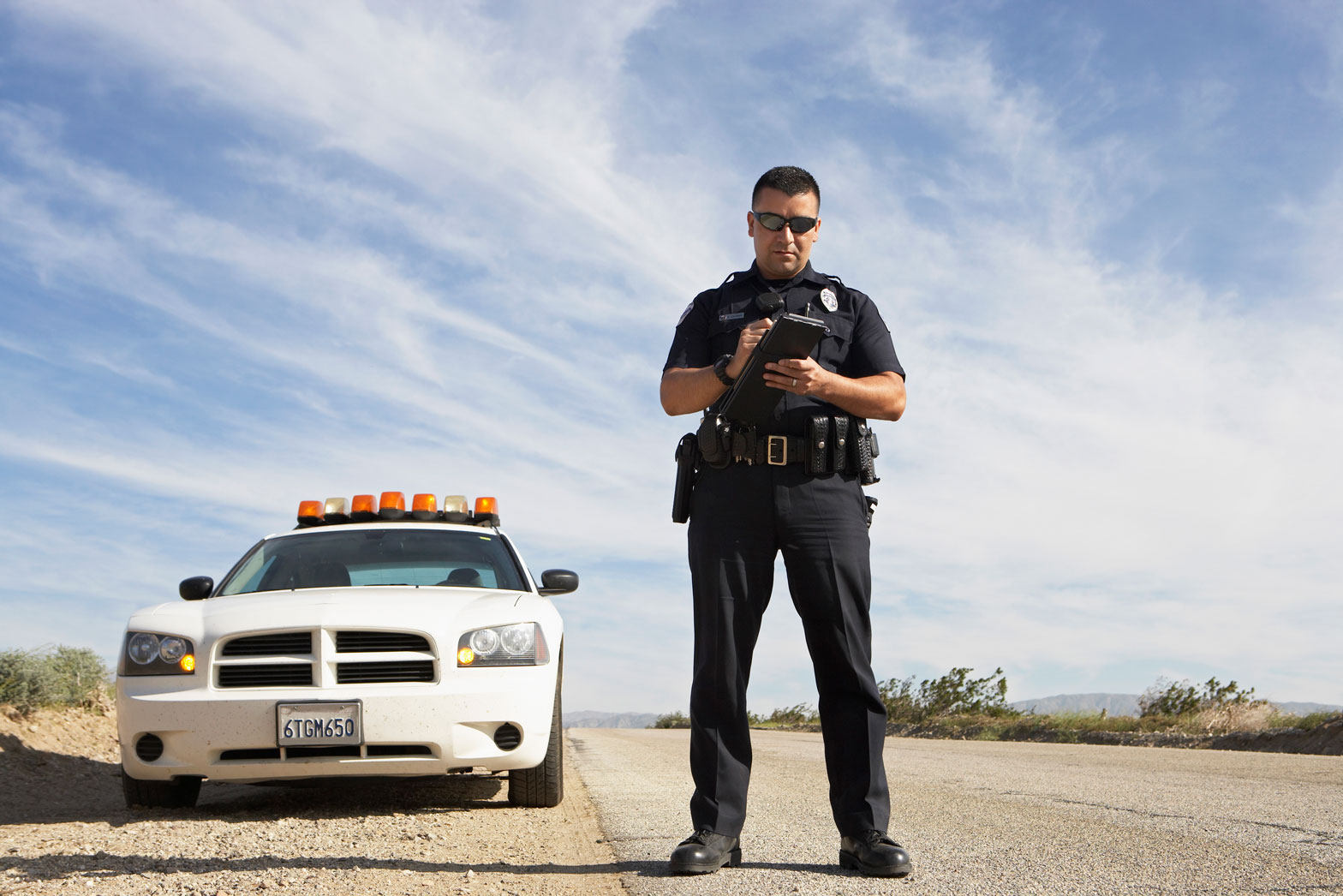If you or a loved one find yourselves in a difficult situation, we understand the urgency and stress that comes with it. At Angels Bail Bonds, we specialize in providing the support and assistance needed to secure bail for felony evading a police officer charges.
When facing charges under VC 2800.2 for felony reckless evading a police officer, the role of a prosecutor becomes pivotal. The legal complexities of cases involving driving under the influence or resisting arrest require expert guidance. That’s where a specialized law firm comes into play, offering invaluable support and legal advice to navigate the intricacies of your case. Whether it’s understanding the potential implications on your credit card, tax obligations, or even matters as seemingly unrelated as identity theft, a knowledgeable law firm can provide comprehensive assistance.
Moreover, securing bail in such serious circumstances often involves more than just understanding the bail process; it requires a strategic approach to legal defense, considering all possible angles, including mitigating factors like the use of a seat belt during the alleged offense. At Angels Bail Bonds, we collaborate closely with reputable law firms to ensure that our clients are not only released promptly but are also well-prepared to face their legal challenges, protecting their rights and working towards a favorable outcome.
Learn the basics about the bail process for a felony evading a police officer charge, and then contact Angels Bail Bonds today. Let us be your trusted partner in navigating the bail process for felony evading a police officer’s charges. We are here to help you regain your freedom and prepare for your legal journey.
What Is Bail?
Bail in California refers to the amount of money or property that a defendant or their surety (a person responsible for the defendant’s appearance in court) must deposit with the court to secure the defendant’s release from custody while awaiting trial.
The purpose of bail is to ensure that the defendant appears in court for all scheduled hearings and does not flee before the trial. A bail schedule or table determines bail amounts, but a judge can deviate from the schedule based on various factors, including the severity of the offense, the defendant’s criminal history, and whether the defendant is a flight risk. If the defendant fails to appear in court, the bail is forfeited, and a warrant may be issued for their arrest.
What Are Bail Bonds?
When you find yourself in a situation where you can’t afford to pay for your bail, bail bonds might be the solution for you. A bail bondsman, who a bail bond company employs, will charge you a fee in exchange for providing the payment. Bail bond companies in California charge only 10% of the total bail amount to post-bond for a defendant. So, if the bail amount is $20,000, the bondsman will charge $2,000 instead of the full amount. While this may still seem like a lot of money, it’s much more affordable than paying the entire bail amount, especially on extremely high bail amounts for some serious felonies.
Those rates can be as high as 20% for some immigration and federal charges because these rates are set by law, and all bail companies must charge the same amount. Despite the costs, using a bail bondsman can be a lifesaver for those who cannot afford to be released from custody on bail.
Remember, the concept of bail is founded on the principle that an accused person is considered innocent until proven guilty beyond a reasonable doubt, whether they’re being accused of infraction offenses or felonies.
What Happens At A Bail Hearing?
The amount of bail is normally set at the person’s initial court appearance, often known as the arraignment stage or pre-trial detention in either a city or county jail. A judge can either release a person on their own recognizance (OR) with a promise to appear in court at a later date or deny their OR and impose bail.
If the charges are infraction offenses or even some misdemeanor offenses—such as a DUI with no accident injuries or significant property damage— the person will usually be released without bail after being arrested. More serious felony charges, like a murder charge or assault with a deadly weapon, will not have OR as an option and will only be released from custody on bail.
You must pay the bail amount or post a bail bond on the bail schedule. An arresting officer might ask for a higher bail amount than what the bail schedule suggests.
What Factors Influence a Defendant’s Bail Amount?
The bail bond process starts when a defendant is in front of a judge to determine bail. Then several factors are put into play, including the severity of the misdemeanor or felony crime, criminal history, whether the defendant is a flight risk, community ties, financial resources, their potential danger to public safety, and even mental health are considered when determining bail amount.
The bail schedule further gives guidance for all criminal charges, with the judge having some leeway in the specific amounts, as mentioned. And even if they’re allowed out on bail, the defendant might have to be placed under house arrest, be prohibited from owning any deadly weapons, or placed under electronic monitoring.

Have You Been Charged With Felony Reckless Evading A Police Officer VC 2800.2?
If you’ve been charged with a criminal offense like felony evading a police officer, you or a loved one must contact the experts at Angels Bail Bonds immediately. Our team of bail bondsmen and criminal defense lawyers provide assistance during pre-trial detention at no extra cost, including nationwide.
What Is Felony Reckless Evading A Police Officer?
Felony reckless evading a police officer, as defined in section 2800.2 of the California Vehicle Code, refers to the intentional act of fleeing or attempting to elude a pursuing peace officer and their marked police vehicle (or other types of law enforcement vehicles) while driving a motor vehicle with a willful or wanton disregard for the safety of persons. This offense is considered a felony, indicating a more severe degree of criminality due to the reckless nature of the evasion and the potential danger it poses to public safety.
2800.2 is worded as follows in the Vehicle Code:
(a) If a person flees or attempts to elude a pursuing peace officer in violation of Section 2800.1 and the pursued vehicle is driven in a willful or wanton disregard for the safety of persons or property, the person driving the vehicle, upon conviction, shall be punished by imprisonment in the state prison, or by confinement in the county jail for not less than six months nor more than one year. The court may also impose a fine of not less than one thousand dollars ($1,000) nor more than ten thousand dollars ($10,000) or may impose both imprisonment or confinement and fine.(b) For purposes of this section, a willful or wanton disregard for the safety of persons or property includes but is not limited to driving while fleeing or attempting to elude a pursuing peace officer, during which time either three or more violations that are assigned a traffic violation point count under Section 12810 occur, or damage to property occurs.
Evading a public officer or any law enforcement officer who pulled you over is pursuing you can be a misdemeanor if it’s not done recklessly or with wanton disregard for the safety of others.
Evading is defined in VC 2800.1, which states:
(a) Any person who, while operating a motor vehicle and with the intent to evade, willfully flees or otherwise attempts to elude a pursuing peace officer’s motor vehicle is guilty of a misdemeanor punishable by imprisonment in a county jail for not more than one year if all of the following conditions exist:
(1) The peace officer’s motor vehicle exhibits at least one lighted red lamp visible from the front, and the person either sees or reasonably should have seen the lamp.(2) The peace officer’s motor vehicle is sounding a siren as may be reasonably necessary.
(3) The peace officer’s motor vehicle is distinctively marked.
(4) The peace officer’s motor vehicle is operated by a peace officer, as defined in Chapter 4.5 (commencing with Section 830) of Title 3 of Part 2 of the Penal Code, and that peace officer is wearing a distinctive uniform.
Types Of Felony Reckless Evading A Police Officer Charges In California
There is only one type of felony offense in evasion of a public officer, and that’s the crime detailed in VC 2800.2, where a person willfully flees or attempts to elude a pursuing police vehicle while driving with reckless and wanton disregard for the safety of others. This offense is classified as a felony due to the potential danger it poses to public safety. If the evasion of a police officer or any public officer is not done with wanton disregard for safety or recklessness, then it’s a misdemeanor charge.
If convicted, the penalties can include substantial fines, imprisonment, and the suspension of driving privileges. In the case of a misdemeanor charge, the penalties are less than a year in county jail or misdemeanor probation, coupled with fines.
It may result in a permanent criminal record, which can have long-term consequences on employment and other aspects of a person’s life.
Evading an Officer and Causing Injury or Death VC 2800.3
Furthermore, if bodily injury or death results from the reckless evading of a public officer or law enforcement vehicle, then the defendant will also be charged under VC 2800.3, evading an officer causing injury or death, a very serious crime that can even lead to vehicle manslaughter charges.
VC 2800.3 states:
(a) Whenever willful flight or attempt to elude a pursuing peace officer in violation of Section 2800.1 proximately causes serious bodily injury to any person, the person driving the pursued vehicle, upon conviction, shall be punished by imprisonment in the state prison for three, five, or seven years, by imprisonment in a county jail for not more than one year, or by a fine of not less than two thousand dollars ($2,000) nor more than ten thousand dollars ($10,000), or by both that fine and imprisonment.(b) Whenever willful flight or attempt to elude a pursuing peace officer in violation of Section 2800.1 proximately causes death to a person, the person driving the pursued vehicle, upon conviction, shall be punished by imprisonment in the state prison for a term of 4, 6, or 10 years.

Penalties For Felony Reckless Evading A Police Officer Cases
Under VC 2800.2 of the California Vehicle Code, felony reckless evading a police officer is a serious offense.
The penalties for this charge can include the following:
Imprisonment:
- A conviction for felony reckless evading can result in imprisonment in county jail or state prison for a period of 6 months or one year in cases of reckless evasion of a public officer, but for up to seven years if there’s bodily injury or death as a result of that invasion.
Fine:
- In addition to imprisonment, the court may impose a fine of up to $10,000 in cases of evasion with bodily injury and wanton disregard for safety. This fine is in addition to any other penalties imposed.
Probation:
- The court may also choose to impose probation instead of or in addition to imprisonment. If probation is granted, it will typically include certain conditions, such as regular check-ins with a probation officer, completion of community service, and possibly other requirements.
License Suspension:
- If you evade police while driving a commercial vehicle under a commercial driver’s license, your license will be suspended. The suspension of the right to drive a commercial vehicle will be for at least one year. If a commercial driver has more than one violation or felony, they will lose their right to drive a commercial motor vehicle for the rest of their lives.
The potential penalties for misdemeanor evading a police officer are lower compared to the felony offense but still serious. There are a few potential county jail sentences of a few months to a year, with lower fines as well.
Average Bail For Felony Reckless Evading A Police Officer (Vc 2800.2)
Felony evading a police officer is among the most serious crimes in the California Penal Code and on the bail schedule, with the initial bail set at $50,000 to $100,000 for felony evading a police officer. In many counties, like Los Angeles County, the bail is as high as $500,000.
You Need An Experienced Bail Bond Agent That Specializes In Felony Reckless Evading A Police Officer Defense
The bail bond process for a felony evading a police officer charge is almost impossible without expert help at your side, as the standard bail for felony evading a police officer is $50,000 to $100,000. Nonetheless, a bail bond company and a criminal defense attorney can aid you during this difficult time and help you and your loved one obtain that bail money.
Best Legal Defense Against Felony Reckless Evading A Police Officer Charges
There are several possible legal defenses against charges of felony reckless evading a police officer. One potential defense is arguing that the defendant did not have the requisite intent to evade the police officer.
To establish this defense, the defendant must demonstrate that they did not willfully or intentionally engage in evasive actions and that any evasion was purely accidental or unintentional. They might be able to show they were driving below or at the speed limit or that their driving did not meet the legal definition of “wanton disregard for safety” either.
Another possible defense is challenging the legality of the initial police pursuit. If the police officer did not have probable cause or reasonable suspicion to initiate the pursuit, the defense can argue that the entire pursuit was unlawful. This argument might include arguments that the distinctive markings on a law enforcement department’s vehicle were not visible, the siren was not on, or it was not clear they were pursuing the defendant at all.
This defense requires a thorough investigation and analysis of the circumstances leading up to the pursuit, including any potential violations of the defendant’s constitutional rights.
A criminal defense lawyer may also assert a necessity defense if they can show that their actions were necessary to prevent greater harm or danger. This defense requires proving that the defendant reasonably believed they had no other viable option but to evade the police officer in order to avoid imminent harm or danger to themselves or others.
It’s important to note that the viability of these defenses will depend on the specific facts and circumstances of each case. Consulting with an experienced criminal defense attorney is crucial to determining the best defense strategy based on the individual situation.
Free Consultation & Case Review
Do you know someone who has been arrested for felony evading a police officer? Look no further because we are here to help. At Angel Bail Bonds, we work with experienced bail bondsmen and criminal defense attorneys to be your best option, even in cases where you need bail for a felony evading a police officer. We offer flexible payment plans and affordable rates to make the bail process more manageable for you and your loved ones. If you have any questions about how bail laws and the bail bond process works in Southern California, Northern California, or anywhere in the state, or if you need assistance helping a loved one avoid jail time, don’t hesitate to call us today.





